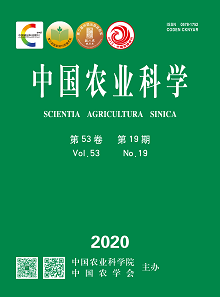【Objective】Aimed at analyzing agronomic traits and yield changes of national Tartary buckwheat varieties in regional trials over 12 consecutive years, and discussing improvements and existing problems with Tartary buckwheat varieties in China, so as to provide basis for future genetic improvements in Tartary buckwheat in China.【Method】Depending on influences of environmental factors such as climate and geography on characteristics of Tartary buckwheat and in terms of southern and northern trial groups classified according to the geographical division standards of North and South China, the cluster analysis, correlation analysis and multiple regression were employed to analyze variations of Tartary buckwheat varieties in growing duration, plant height, branch and node numbers of main stem, grain weight per plant, 1000-grains weight and yield in the National Tests of Tartary Buckwheat Varieties of China in 12 years from 2003 to 2014 and that examined correlations between different traits of Tartary buckwheat in the northern and southern trial groups, and traits differences of Tartary buckwheat varieties developed by the different breeding units between the two trial groups.【Result】Over the 12 years in question, the yields of the Tartary buckwheat varieties in the northern and southern trial groups increased by 21% and 32%, with an average annual rate of increase of 1.8% and 2.6%, respectively. There were totally 42 buckwheat varieties developed by 19 breeding units of 9 provinces, Shaanxi, Gansu, Yunnan, Guizhou, Jiangxi, Shanxi, Sichuan, Hunan and Chongqing. Of these breeding units, there were 5 units in Yunnan, 4 units in Guizhou, 3 units in Shaanxi, 2 units in Gansu, Shanxi and in Sichuan, and 1 unit in Jiangxi, Hunan and Chongqing City. The tested varieties developed by twelve breeding units from Yunnan, Guizhou and Shaanxi, three major Tartary buckwheat producers of China, made up 59.5% of all the tested varieties. The cluster analysis of Tartary buckwheat varieties from the different provinces (regions) showed that when the relative genetic distance was 5, the northern and southern trial groups can be divided into 4 and 3 classes, respectively. Of the northern group, the varieties from Shaanxi, Hunan and Shanxi were grouped into one class, the varieties from Gansu, Guizhou, Jiangxi and Yunnan were grouped into one class, and the varieties from Chongqing and Sichuan were grouped into one class; and of the southern trial group, the varieties from Guizhou, Jiangxi, Yunnan and Chongqing were grouped into one class, the varieties from Shaanxi, Gansu and Shanxi were grouped into one class, and the varieties from Sichuan and Hunan were grouped into one class. Correlation analysis showed that there was significantly positive correlations between the plant weights and yields of the northern and southern trial groups; significantly positive correlations between the grain weight per plant and yields of the northern trial group and significantly positive correlations of the grain weights per plant and plant heights with the branch numbers of main stems of the southern trial group; and there were different correlations in the other traits between the north and south trial groups. Multiple regression analysis showed that the growing durations, branch numbers of main stems, grain weights per plant and 1000-grains weights of the Tartary buckwheat varieties of the northern group jointly contributed 53.0% to their yield variation, and the growing durations, branch and node numbers of main stems, grain weights per plant and 1000-grains weights of the Tartary buckwheat varieties in the southern group jointly contributed 61.4% to their yield variation.【Conclusion】The national Tartary buckwheat variety regional tests in 12 years from 2003 to 2014 showed that certain improvements were made in the yield and related traits of Tartary buckwheat varieties in the northern and southern trial groups, with their yields increased to a certain extent and their growing durations shortened, but with their other traits not much changed. Of all the breeding units in question, the varieties developed by the breeding units in Yunnan, Guizhou and Jiangxi had wider environmental adaptabilities than the varieties developed by the other units in the other provinces. It was still the main goal in current Tartary buckwheat variety improvement to develop Tartary buckwheat varieties with high and stably yields, stress resistances and other excellent agronomic traits. Correlation analysis showed that it was an important approach in Tartary buckwheat variety breeding to improve Tartary buckwheat in grain weight per plant and branch numbers of main stems, etc. It was the key problem to develop Tartary buckwheat varieties with high flavonoids, easy hulling, good shattering and lodging resistances and uniform maturities and good suitability for mechanized cultivation for Tartary buckwheat production. Identifying new Tartary buckwheat germplasm resources and excellent genes, strengthening researches and developments and applications of new technologies such as molecular design breeding, and improving Tartary buckwheat variety improvement technologies and levels were the important directions in Tartary buckwheat variety improvement.









